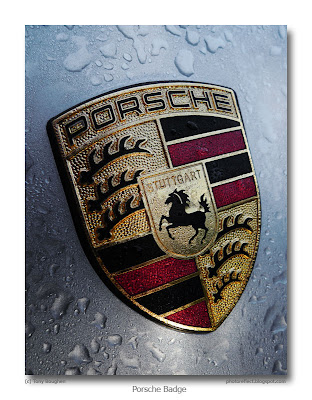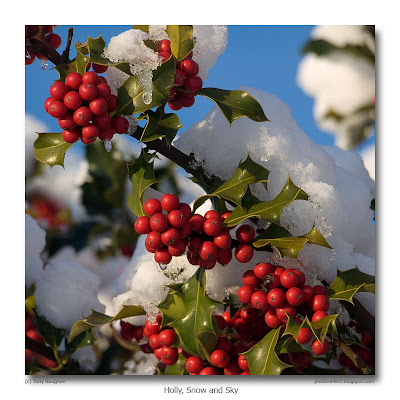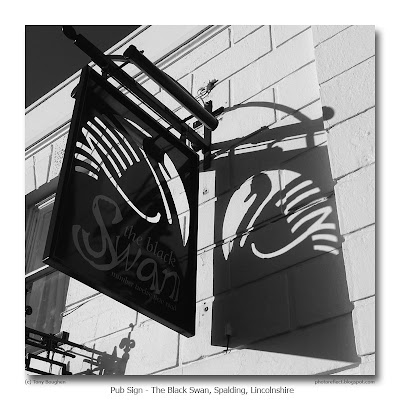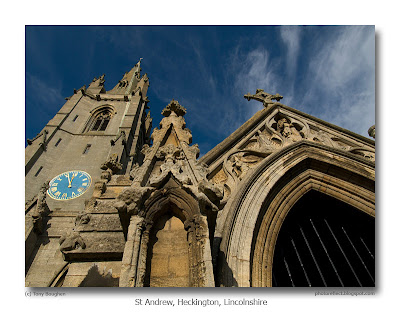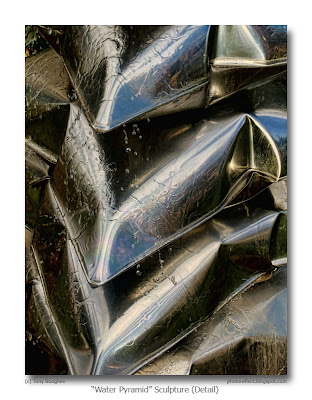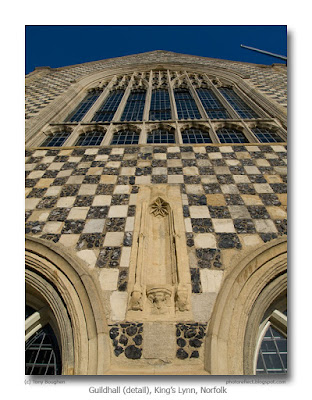 click photo to enlarge
click photo to enlargeOn what should I end the photographic year? Which would be the most apposite subject for the last image of 2009? Those thoughts were going through my head as I stood at the sink washing up after the turkey, roast potatoes, sprouts and the rest of the Christmas meal, listening to my newly acquired Nina Simone CD. I spend quite a bit of time pondering life, the universe, everything (and the blog) as I plunge my hands into the suds, and scrub the china. Even though we have an automated servant in the form of an electrical dishwasher, there are times when "man-draulic" action is required. I sometimes think that washing up has taken the place of my drive to and from work: it is a time for reflection, focusing on the important things of life, and putting the pressing but inconsequential bits in their place.
And, it works! In fact what came from this period of quiet reflection, as I listened to Nina sing "Don't Let Me Be Misunderstood", "I Wish I Knew How It Would Feel To Be Free" and "Nobody's Fault But Mine" - all titles with resonance for a regular blogger - was the subject of the final photograph of the year. It started with the difficulty of removing the cooked-on pieces of turkey from the tray on which it had been roasted. My usual tools were making no impression, so I placed it on the worktop, applied abrasive powder detergent and went at it with a damp scouring pad. As I leaned into my work I noticed that the, by now, liquid detergent was leaving swirls and swashes like those made by a large wet paintbrush on paper. Experimenting I found that I could make shapes that appeared three-dimensional, ones that recalled Munch's "The Scream", others that brought to mind Hokusai's "Great Wave of Kanagawa", and even Abstract -Expressionist works. So, I grabbed my small camera, and between strokes took several shots of my handiwork, three of which I present in the form of a "triptych." So pleased am I with my original artwork that I'm thinking of submitting it for the 2010 Turner Prize. Or perhaps not!
Now I imagine a few of you - and it will be only a few because not many can have made it this far in today's post - are wondering whether or not I got my dirty tray clean. It pains me and shames me to admit that I didn't, and that my wife had to complete my work (and achieve the required pristine finish). At this point I imagine quite a few of my female readers are shaking their heads knowingly, muttering, "Typical man - playing about with his camera instead of doing the washing up properly." And yes, once again I'm guilty as charged.
Happy New Year!
photograph & text (c) T. Boughen
Camera: Lumix LX3
Mode: Aperture Priority
Focal Length: 5.1mm (24mm/35mm equiv.)
F No: f2
Shutter Speed: 1/20
ISO: 400
Exposure Compensation: -0.33 EV
Image Stabilisation: On
